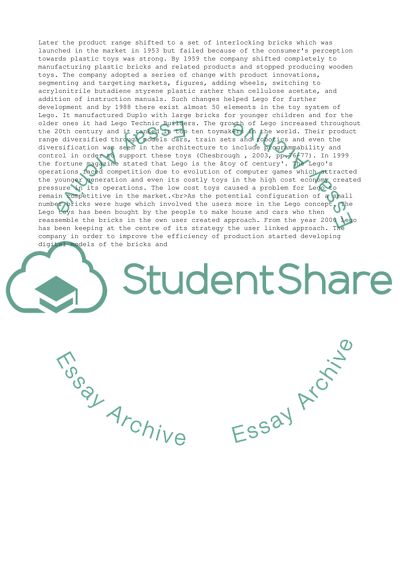Cite this document
(“Critically discuss the role of users in Legos approach to innovation Essay”, n.d.)
Critically discuss the role of users in Legos approach to innovation Essay. Retrieved from https://studentshare.org/business/1632036-critically-discuss-the-role-of-users-in-legos-approach-to-innovation-and-consider-whether-the-strategy-could-be-put-to-use-in-other-organisations
Critically discuss the role of users in Legos approach to innovation Essay. Retrieved from https://studentshare.org/business/1632036-critically-discuss-the-role-of-users-in-legos-approach-to-innovation-and-consider-whether-the-strategy-could-be-put-to-use-in-other-organisations
(Critically Discuss the Role of Users in Legos Approach to Innovation Essay)
Critically Discuss the Role of Users in Legos Approach to Innovation Essay. https://studentshare.org/business/1632036-critically-discuss-the-role-of-users-in-legos-approach-to-innovation-and-consider-whether-the-strategy-could-be-put-to-use-in-other-organisations.
Critically Discuss the Role of Users in Legos Approach to Innovation Essay. https://studentshare.org/business/1632036-critically-discuss-the-role-of-users-in-legos-approach-to-innovation-and-consider-whether-the-strategy-could-be-put-to-use-in-other-organisations.
“Critically Discuss the Role of Users in Legos Approach to Innovation Essay”, n.d. https://studentshare.org/business/1632036-critically-discuss-the-role-of-users-in-legos-approach-to-innovation-and-consider-whether-the-strategy-could-be-put-to-use-in-other-organisations.


